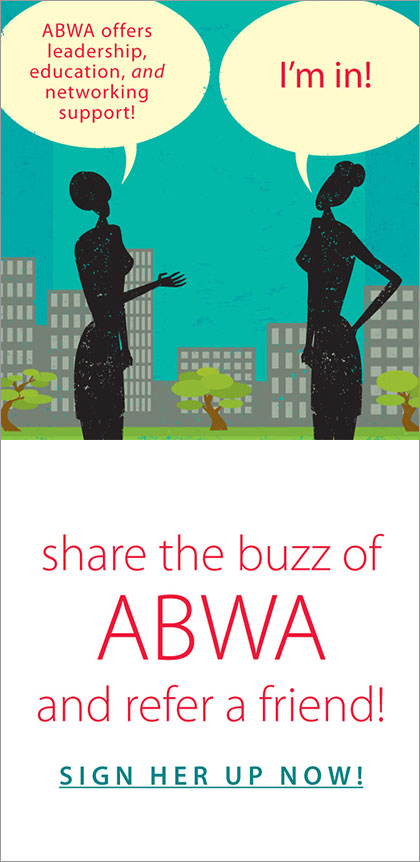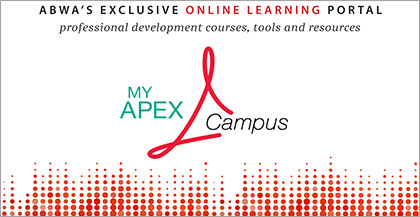
by American Business Women's Association | Jan 26, 2023 | Blog, Uncategorized
Being on video and watching videos is today’s business norm. A recent survey showed 76% of consumers watched a video before purchasing a product. Social media influencers promote products through video-based storytelling. You login to video meetings daily with prospects and customers.
Since 2005, the year YouTube launched, video has increasingly grown in prevalence, production value, and consumption. Then in 2020 video marketing took a massive leap forward with the pandemic-induced use of video conferencing, podcasts (with video), and livestreams.
Today, YouTube is the most used social platform for research purposes among business-to-business decisions makers with 50.9% of users. And every day more than 300 million people participate in a Zoom meeting.
The reluctant say about video meetings, “It’s not going away.” Strategic leaders, though, say, “Video is how we do business now.”
In today’s business world all video is video content marketing. Zoom is not a phone call with video. Whether it’s a livestream or a self-produced YouTube short, your videos still need to follow a handful of rules.
Positioning
Some marketers consider the word brand to be a four-letter word. The job of marketers and business leaders, they say, is to position a company or product in the market.
The brand becomes how customers define it, and, hopefully, they define it based on your considerable efforts.
The best marketers see this work of positioning to be the first and most important activity. They have learned to be comfortable with discomfort, because good positioning feels limiting. Good positioning is uncomfortably narrow.
It’s a single, narrowly defined target buyer. Your videos—live and recorded—will improve once you know who you are producing them for and what their motivations are.
Differentiation
What makes you different is what gets people’s attention. Not different for different sake, but a viable, propositional difference which appeals to your ideal buyer.
It’s a noisy, messy, and chaotic market. You want to be a brand which means you can charge a premium. If there is nothing to distinguish yourself from the competition, then you’re a commodity and you can only compete on price.
Your differentiation needs to be relevant and clearly expressed on all your video channels, especially video meetings. The first step is to shift responsibility for video meetings from operations to marketing. The next step, especially with a hybrid workforce, is to make sure that everyone who shows up on video is well trained and that their presence represents the value of the brand.
Distribution
Where to post your videos is determined by positioning and differentiation, not trend or fashion. A fishing guide once said, “You’re not fishing unless you have fish under your boat.” Or as Maverick said to Goose in the first Top Gun, “Target rich environment.”
Distribution can include everything from the social media platform (LinkedIn, TikTok) to the video distributor (YouTube, Vimeo) to the livestream platform. It answers what and how of your video content strategy.
Regardless of platform, you want all your videos to do one thing: direct interested parties to your website. There they learn more about you and begin to fall in love with you.
Distribution isn’t a benign decision. It says a lot about who you are and the people you’re trying to reach.
Story
Stories draw prospects in and customers closer. A well-told story engages the right people into a deeper, more meaningful conversation.
The right story you want to tell elevates the customer as hero. It captures your positioning and differentiation. How you will tell your story—written, audible, or visual—will be determined by the platform you choose and the audience you want to reach.
Tiktok is both a genre of video and a distribution platform. The audience consumes video through a spontaneous scroll. How you tell your story on TikTok may not work on LinkedIn.
Additionally, your video meetings, podcasts, and livestream productions express the story of your brand. The way you show up on video tells a story. But is it the right story? Your video meetings and podcast presence need to set the tone and timbre of future engagements.
Surprise
Better video is an act of kindness. Do everything you can to be more present across the lens.
We all spend enough time in front of a camera. When you show up on camera with a better-than-expected presence, you surprise people. Surprise is one ingredient in being unforgettable.
When you are not present, people check out. When you are present, people respond. Presence is what you say before you say a word.
Your presence should communicate confidence, power, and credibility. This will surprise some people. When combined with confidence, you’ll be more persuasive.
Conclusion
Video content is a critical component to your digital content marketing strategy. All video—whether meetings, podcasts, e-learning, or social media—deserve careful review and attention.
Video is a powerful and compelling medium. These five rules provide the framework you need to begin to evaluate what you’ve already produced and what you plan to produce.
Say to yourself, “Video is how we do business now.” Go and do it!
About the Author
Patrick McGowan, MBA, consults, trains, and coaches business executives and teams to have more power, presence, and credibility on-camera in a video-first market. He pulls together three-decades in marketing, innovation, and leadership. McGowan started Punchn to address the challenges and insecurities we all face when on camera. He is the author of “Across the Lens: How Your Zoom Presence Will Make or Break Your Success.”

by American Business Women's Association | Oct 21, 2022 | Blog
We live in an upside world where the old rules no longer apply. Many call it a VUCA world – volatile, uncertain, complex and ambiguous. Mass consumerism has been replaced by a new consumption paradigm as people are driven by new essentialism where things matter less and relationships, experiences and self-being dominate all. In this new world, workers are restless, customers fickle, investors skittish, and the public has an appetite to cancel. In order to rally everyone together to stand behind a company and its path during all the ups and downs, leaders need to draw upon emotions as rationality will not carry the day. They have one tool at their disposal to do this delicate work – the brand.
Although often associated with marketing, brands are actually cultural icons that symbolically carry meaning. In just a nano second, they evoke common immediate meaning and emotions across all people. Think BMW, John Deere, Chanel, Apple and American Express. In a world where everything is uncertain, brands can be trusted to stand true. Now, if you don’t have a brand, you can build one. Anyone can. It takes commitment to people, to tell their story and represent their interests with your brand, not your own. If you create a brand that represents the highest common denominator between your people (customers, employees, investors) and your products/services, then you can forge an enduring powerful partnership that will yield surprising dividends for your business. It all begins with understanding the basics of what a brand really means for a business.
ONE – A Brand Resides in the Mind not in a Logo
Although expressed in a logo and a tagline, a brand is actually a mental construct that gets into the mind and lives in the memory of people. Branding is the process of creating the brand in the minds of people. It is typically done by creating things and experiences that “express” the brand such as marketing materials and product design. Brands also live in the culture. Powerful brands like Nike become social concepts and exist in the culture where they continually give people cues and establish the brand as a part of society.
TWO – Brands Set Meaning
Brands give meaning to products. Is an anti-lock braking system (ABS) a breakthrough in performance (BMW) or safety (Volvo)? That depends on the brand. The brand is a mental lens that provides immediate meaning. A Snickers bar is a snack. Tiffany means luxury taste and quality. Apple is about unleashing creativity while IBM is about improving productivity. The brand provides context which tells people why a product is important to them.
THREE – Brands Carry Emotional Power
Like great art, brands are designed to elicit a response, both emotional and rational. Like art they can enchant and often captivate people which creates desire. Marlboro was the first filter-tipped cigarette and was initially launched as a woman’s cigarette which failed. The same product was re-branded as the ultimate masculine smoke and with the swagger of the Marlboro man still remains one of the most powerful brands in the world. Powerful brands are mythologies that evoke emotions that swell to desire.
FOUR – Brands are Fiction Not Fact
Branding is poetry not journalism. Messaging matrixes and value propositions belong to marketers and are fact-based. Branding is another world that is concept-based. Branding brings out the big gun – an idea. A powerful, transcendent, mind-tweaking idea designed to engage the mind and heart at another level. The idea is what catalyzes new behavior and thinking. When Tide gets clothes clean, it means that Mom and Dad are good parents and conveys that message. The Home Depot is a large hardware store, but the brand makes it a Home Center for any current and aspiring do-it-yourselfer.
FIVE – Brands Defy Logic
When you have a powerful brand, you’ll be surprised by what it can do. You will see strong conviction and commitment across employees, customers and investors despite challenges. People tend to defend the brands they love and stay loyal against all odds – better alternatives, cheaper alternatives, easier alternatives. To achieve that kind of priceless cohesion, you have to build and continually maintain the brand campfire – and make it into a bonfire for the whole world to see. At John Deere, they say people bleed green because the brand is so deep.
SIX – Brands Deliver Business Value Multiple Ways
Because powerful brands are sticky, they have the ability to build a moat around the business. Customers remain loyal even in the face of superior performing or lower priced competitors. People forgive and forget product and corporate errors which mitigates losses. People are more willing to try new products, services and experiences from brands they love which accelerates sales. If you have a vision to build an empire, but a brand to amplify the upside and mitigate the downside.
Many corporate executives view the brand as simply a marketing asset. Others like Steve Jobs, Bill Gates, Richard Branson and Elon Musk view it as a corporate asset, part of the business strategy. Once built, a powerful brand can be used to wield influence in many circumstances from the Main Street to Wall Street to Capitol Hill. While products and executives may come and go within a company, the brand can endure forever – as long as it is well maintained.
In a world of fake news where people are becoming increasingly unmoored and where constant shocks and disruptions seem to prevent ‘normal’ from ever being a reality, brands are a reassuring presence that people can depend on. Powerful brands nurture, the people that come to work, buy products and invest in companies. Business always comes down to connecting with people on a human level. Powerful brands are creative concepts that stimulate the imagination and emotions in ways that most CEOs cannot. With a powerful brand, the CEO has a tool to open minds, raise hearts, command attention, bring everyone together and protect the business again in a volatile, uncertain, complex and ambiguous world.
About the Author: Jane Cavalier, CEO and Founder of BrightMark Consulting, is a nationally recognized brand strategist, board member, blogger and author of bestselling business book The Enchanted Brand (Amazon). She helps organizations conquer a changing world with powerful brands and reputations. Recognized for creating breakout brands like Snapple and Qwest, Jane has worked with over 100 organizations including American Express, Johnson & Johnson, ExxonMobil and the U.S. Navy. For more information, visit www.brightmarkconsulting.com.

by American Business Women's Association | Feb 27, 2019 | Blog, Uncategorized
By Ted Janusz
Can you relate to this? John Wannamaker, the Philadelphia department store magnate, said “Half the money I spend on advertising is wasted; the trouble is, I don’t know which half.” But there is one form of marketing, that ALWAYS works … what is it?
WORD OF MOUTH!
Of course, now with the internet and social media, you could call it WORLD of mouth marketing. People are six times more likely to rely on the word of other people when making a buying decision rather than advertising.
In fact, 80% of consumer buying decisions are based on personal recommendations. Here’s why it works …
The average American adult knows 400 people … people you work with, went to school with, or people you know socially. If you assume each of those 400 people know 400 others (of course, there will be some overlap – but let’s keep it simple), you now have an immediate network of 140,000 people.
And if you assume those 140,000 people know 400 others, you are up to one-third of the US population. And what will people spread about your business, good news or bad? Right! Bad news!
Your average satisfied customer will tell 5 to 8 others. But your average upset customer (if you have any) will 10 to 16. In fact, one in five will tell 20 people how upset you have made them.
In their book Creating Customer Evangelists, authors Ben McConnell and Jackie Huba say, “Competition for entertainment dollars – where Dallas Mavericks owner Mark Cuban says he competes – is fierce. To succeed, he must continually focus on increasing the average lifetime value of a Mavs season ticket holder. In 2002, that figure was $300,000, according to Cuban. “The Chicago Cubs, you’ve got to wait in line to get your season tickets,” he says. “That’s the goal … then I don’t have to spend lots of money on salespeople and all kinds of support efforts – I’ve just got to keep [customers] happy. It’s a lot easier to keep ‘em happy than to go out and get new ones to replace ‘em.”
Now the lifetime value of one of your customers may not be $300,000 like it is for the Dallas Mavericks. But once you determine what that value is for you, you’ll realize how important to keep those customers happy – since they, bar none, are your best source of marketing.
Ted Janusz, MBA, CSP is a Certified Speaking Professional who has delighted audiences for more than 5,000 hours, in 49 of the 50 United States, in Canada from Halifax to Vancouver, in Australia, Mexico, and Puerto Rico. Learn more at www.januspresentations.com.






